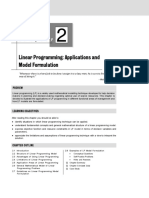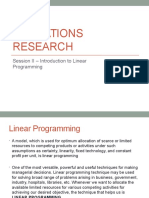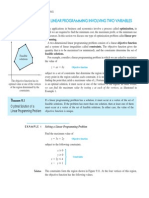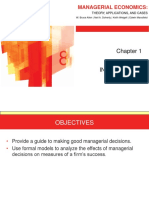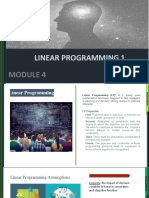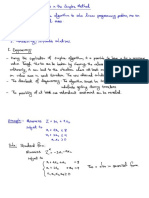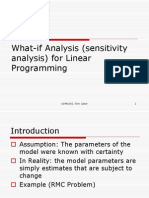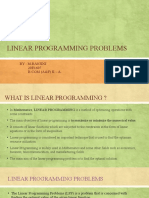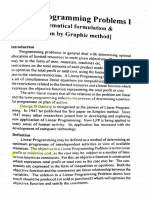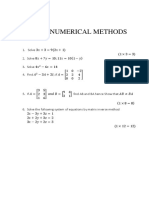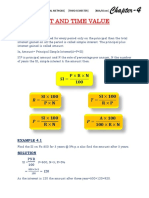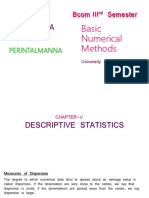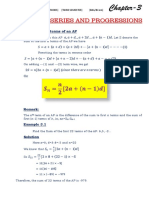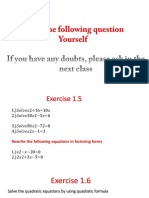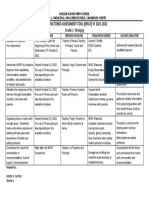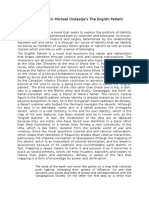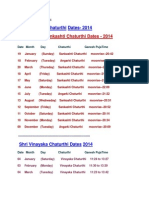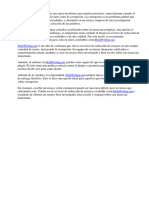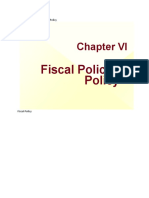0% found this document useful (0 votes)
300 views39 pagesLinear Programming for BBA Students
The document discusses linear programming problems. It defines linear programming as a technique for choosing optimal alternatives when objectives and constraints can be expressed as linear functions. It outlines the key properties and objectives of linear programming models, including maximizing profit or minimizing costs. The assumptions of linear programming problems are described, such as deterministic conditions, linear relationships, and fixed technology. Applications in various fields are provided as examples. The steps to formulate a linear programming problem and solve it using graphical and other methods are also summarized.
Uploaded by
Jaya PrakashCopyright
© © All Rights Reserved
We take content rights seriously. If you suspect this is your content, claim it here.
Available Formats
Download as PDF, TXT or read online on Scribd
0% found this document useful (0 votes)
300 views39 pagesLinear Programming for BBA Students
The document discusses linear programming problems. It defines linear programming as a technique for choosing optimal alternatives when objectives and constraints can be expressed as linear functions. It outlines the key properties and objectives of linear programming models, including maximizing profit or minimizing costs. The assumptions of linear programming problems are described, such as deterministic conditions, linear relationships, and fixed technology. Applications in various fields are provided as examples. The steps to formulate a linear programming problem and solve it using graphical and other methods are also summarized.
Uploaded by
Jaya PrakashCopyright
© © All Rights Reserved
We take content rights seriously. If you suspect this is your content, claim it here.
Available Formats
Download as PDF, TXT or read online on Scribd
/ 39
